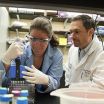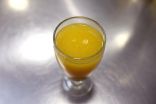(Press-News.org) Genetic mutations may cause more cases of amyotrophic lateral sclerosis (ALS) than scientists previously had realized, according to researchers at Washington University School of Medicine in St. Louis and Cedars-Sinai Medical Center in Los Angeles. The scientists also showed that the number of mutated genes influences the age when the fatal paralyzing disorder first appears.
ALS, also known as Lou Gehrig's disease, destroys the nerve cells that control muscles, leading to loss of mobility, difficulty breathing and swallowing, and eventually paralysis and death. Understanding the many ways genes contribute to ALS helps scientists seek new treatments.
The study appears online in Annals of Neurology.
Scientists have linked mutations in more than 30 genes to ALS. Alone or in combination, mutations in any of these genes can cause the disease in family members who inherit them.
Roughly 90 percent of patients with ALS have no family history of the disease, and their condition is referred to as sporadic ALS. Scientists had thought mutations contributed to barely more than one in every 10 cases of sporadic ALS.
But researchers recently started to suspect that patients with sporadic ALS carry mutations in the 30 genes linked to ALS more often than previously thought. The new study is among the first to prove this suspicion correct.
"To our surprise, we found that 26 percent of sporadic ALS patients had potential mutations in one of the known ALS genes we analyzed," said co-senior author Matthew Harms, MD, assistant professor of neurology at Washington University. "This suggests that mutations may be contributing to significantly more ALS cases."
The scientists used a sequencing technique devised at Washington University to look at 17 known ALS genes in the DNA of 391 patients with ALS. Like the overall ALS patient population, 90 percent of the patients had no family history of disease.
It's not yet clear why some patients with sporadic ALS have mutations linked to the illness but no family history of the disorder. Researchers don't know if these patients are the first in their families to develop these mutations, or if these altered genes are present in other family members but do not cause the disorder. Harms noted that some of the mutations they identified might not contribute to disease at all.
"It's also possible that these mutations could be combining with environmental factors linked to ALS," said co-senior author Robert Baloh, MD, PhD, associate professor of neurology at Cedars-Sinai Medical Center. "Those factors might coincide in an individual family member and cause disease, while other family members who have the mutation but not the environmental exposures remain unaffected."
The study also shows that having mutations in more than one ALS gene can accelerate the onset of symptoms. In patients with only one mutation, the average age of onset was 61, but in those with more than one mutation, the average age of onset was 51.
The scientists are analyzing genetic data from additional patients with ALS to confirm their findings.
The ALS Association estimates that 30,000 Americans have ALS at any given time. Riluzole, the sole medication approved to treat the disease, has only marginal benefits in patients.
INFORMATION:
This work was supported by the National Institutes of Health (NIH), grant numbers K08-NS075094 and R01-NS069669, and NIH Genetics Epidemiology Training Grant 5-T32-HL-83822-5.
Cady J, Allred P, Bali T, Pestronk A, Goate A, Miller TM, Mitra R, Ravits J, Harms MB, Baloh RH. ALS onset is influenced by the burden of rare variants in known ALS genes. Annals of Neurology. Online Nov. 11, 2014.
Washington University School of Medicine's 2,100 employed and volunteer faculty physicians also are the medical staff of Barnes-Jewish and St. Louis Children's hospitals. The School of Medicine is one of the leading medical research, teaching and patient-care institutions in the nation, currently ranked sixth in the nation by U.S. News & World Report. Through its affiliations with Barnes-Jewish and St. Louis Children's hospitals, the School of Medicine is linked to BJC HealthCare.
The Institute for Quality and Efficiency in Health Care (IQWiG) investigated in a dossier assessment whether propranolol offers an added benefit in comparison with the appropriate comparator therapy in infants with proliferating infantile haemangioma (sometimes called "strawberry mark").
According to the findings, there is an indication of major added benefit of propranolol in some children, i.e. those with haemangioma with a risk of permanent scars or disfigurement. In contrast, an added benefit is not proven for children with life- or function-threatening haemangioma, ...
The vicious cycle of diabetes describes a scenario where people are becoming fatter, often with elevated levels of glucose, and at increased risk for women to develop gestational diabetes (GDM). Intrauterine exposure to GDM, itself, is a major risk factor for later obesity and diabetes, thus perpetuating this maternal-offspring cycle of disease.
Researchers from Lund University have published an overview of evidence across the past few decades in the journal Diabetes, Metabolic Syndrome and Obesity: Targets and Therapy. They emphasize the need to update diabetes prevention ...
It means cancer "in place" but a carcinoma "in situ" often does not want to keep its place. Standing between a cancer cell in situ and the surrounding tissue of fibroblasts and extracellular matrix is the basement membrane, a thin sheet of fibers that normally cradles the cells above it. The basement membrane is also the frontline physical barrier that keeps primary tumors from spreading into the matrix below. Perforating the basement membrane is a cancer cell's first move toward invasion, but how? Fibroblasts are most commonly found in connective tissue that synthesizes ...
In the human brain, the BBB is not the Better Business Bureau but the blood brain barrier and the BBB is serious business in human physiology. The human BBB separates circulating blood from the central nervous system, thus protecting the brain from many infections and toxins. But the BBB also blocks the passage of many potentially useful drugs to the brain and it has long stymied scientists who want to learn more about this vital tissue because of the lack of realistic non-human lab models. Even less is known about the BBB in children. There are significant structural and ...
VIDEO:
This 19-second time lapse video shows the first six hours of neuronal conversion of skin fibroblasts from a patient with Alzheimer's disease.
Click here for more information.
The search for a living laboratory model of human neurons in the grip of Alzheimer's disease (AD)--the so-called "Alzheimer's in a dish"--has a new candidate. In work presented at the ASCB/IFCB meeting in Philadelphia, Håkan Toresson and colleagues at Lund University in Sweden report success ...
Location, location, location goes the old real estate proverb but cancer also responds to its neighborhood, particularly in the physical surroundings of bone marrow cells where human myeloid leukemias arise and where, according to two Harvard bioengineers, stiffness in the surrounding extracellular matrix (ECM) can predict how cancer subtypes react to chemotherapy. Correcting for the matrix effect could give oncologists a new tool for matching drugs to patients, the researchers say.
In work to be presented at the ASCB/IFCB meeting in Philadelphia, Jae-Won Shin and David ...
Alzheimer's disease (AD) progresses inside the brain in a rising storm of cellular chaos as deposits of the toxic protein, amyloid-beta (Aβ), overwhelm neurons. An apparent side effect of accumulating Aβ in neurons is the fragmentation of the Golgi apparatus, the part of the cell involved in packaging and sorting protein cargo including the precursor of Aβ. But is the destruction the Golgi a kind of collateral damage from the Aβ storm or is the loss of Golgi function itself part of the driving force behind Alzheimer's? This was the question for Yanzhuang ...
VIDEO:
Nucleoli (green), small liquid-like nuclear bodies, are kept small and afloat by a fine actin mesh. When the mesh breaks, the nucleoli quickly being to fall and coalesce into larger...
Click here for more information.
Everybody knows that cells are microscopic, but why? Why aren't cells bigger? The average animal cell is 10 microns across and the traditional explanation has been cells are the perfect size because if they were any bigger it would be difficult to get enough ...
Cells are restless. They move during embryogenesis, tissue repair, regeneration, chemotaxis. Even in disease, tumor metastasis, cells get around. To do this, they have to keep reorganizing their cytoskeleton, removing pieces from one end of a microtubule and adding them to the front, like a railroad with a limited supply of tracks. The EB family of proteins helps regulate this process and can act as a scaffold for other proteins involved in pushing the microtubule chain forward.
Still, how these EB proteins function in space and time has remained a mystery. Now Peng ...
The antioxidant activity of citrus juices and other foods is undervalued. A new technique developed by researchers from the University of Granada for measuring this property generates values that are ten times higher than those indicated by current analysis methods. The results suggest that tables on the antioxidant capacities of food products that dieticians and health authorities use must be revised.
Orange juice and juices from other citrus fruits are considered healthy due to their high content of antioxidants, which help to reduce harmful free radicals in our body, ...



